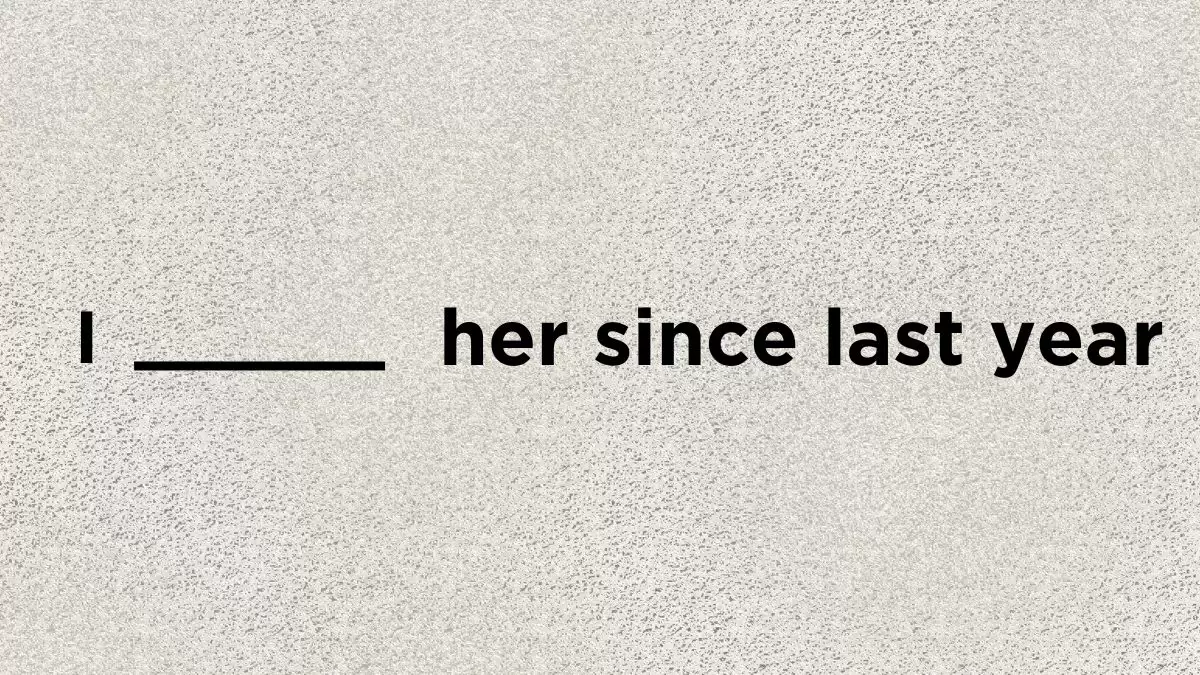Can You Solve These Three Grammar Questions in the Puzzle?
by T Santhosh
Updated Oct 31, 2023

Can You Solve These Three Grammar Questions in the Puzzle?
Discover the world of grammar puzzles. They can keep your mind sharp and reduce stress. You'll find many grammar challenges to enjoy, including the ones coming up next. This challenge can be a bit tricky and is great for people who are really good at grammar and pay attention to details. When you become a pro at this kind of puzzle, it's not just about having fun – it also gives you skills that can be useful in many parts of your life. Even if the puzzle seems hard at first, your goal is to find a solution that follows the grammar rules exactly and reveals the puzzle's secrets. The next section will explain this grammar puzzle in detail and show you how to solve it.
1. I ___ her since last year
The phrase "I haven't seen her since last year" is used to talk about not seeing someone for a period of time that started in the past and continues up to the present. In this sentence, "haven't seen" is a contraction of "have not seen." The word "have" is an auxiliary verb, and "seen" is the past participle form of the verb "see." When we use "haven't seen," it indicates that the action of not seeing her began in the past (last year) and is still true now. So, the speaker is saying that they last saw her sometime in the past year, and they haven't seen her from that time until now.

2. How long have you ___ her?
The question "How long have you known her?" uses the word "known" to ask about the duration of time during which the speaker has been familiar with or acquainted with someone. In this sentence, "known" is the past participle form of the verb "know." When we use "known" in this context, it signifies that the knowledge or familiarity with the person started in the past and has continued up to the present. Essentially, it's asking about the length of time that the speaker has had a relationship or acquaintance with the person.
This form of the verb is used because it refers to an action or state that began in the past (when the speaker first got to know her) and is relevant in the present (as the speaker is still acquainted with her). So, "known" helps convey the idea of an ongoing connection or familiarity with the person up to the current moment.

3. She ___ ill since Thursday
The phrase "She has been ill since Thursday" uses "has been" to indicate an ongoing state that began in the past and continues into the present. In this sentence, "has" is a form of the auxiliary verb "have," and "been" is the past participle of the verb "be." When we use "has been" in this context, it conveys that the state of being ill started on Thursday, which is in the past, and is still true now. This construction helps us express the idea that she became sick on Thursday and remains in that state of illness at the time of speaking. "Has been" is a way of connecting the past with the present, highlighting the duration of the condition.

Calculate the Outcome of 8275 ÷ 55 + 136 x 4 - 2021 ÷ 47=?
To find the solution, remember the order of operations. Start with the divisions and multiplications from left to right: 8275 ÷ 55 equals 150, and 2021 ÷ 47 equals 43. The equation becomes 150 + 136 x 4 - 43. Now, perform the multiplications and additions/subtractions from left to right: 136 x 4 equals 544, and 150 + 544 equals 694. Thus, the solution is 694.
Our updated collection of Brain Teaser, ensures that users always have fresh, engaging content to explore. Test your mental abilities with puzzles at Fresherslive.
Find the Result of 7493 ÷ 61 + 128 x 5 - 2367 ÷ 54=?
In this problem, apply the order of operations. Begin with the divisions and multiplications from left to right: 7493 ÷ 61 equals 123, and 2367 ÷ 54 equals 43. The equation becomes 123 + 128 x 5 - 43. Next, carry out the multiplications and additions/subtractions from left to right: 128 x 5 equals 640, and 123 + 640 equals 763. Hence, the answer is 763.
Can You Solve These Three Grammar Questions in the Puzzle? FAQs
Grammar puzzles are challenges that test your understanding of grammar rules through word or sentence manipulation.







